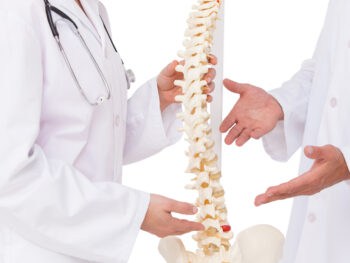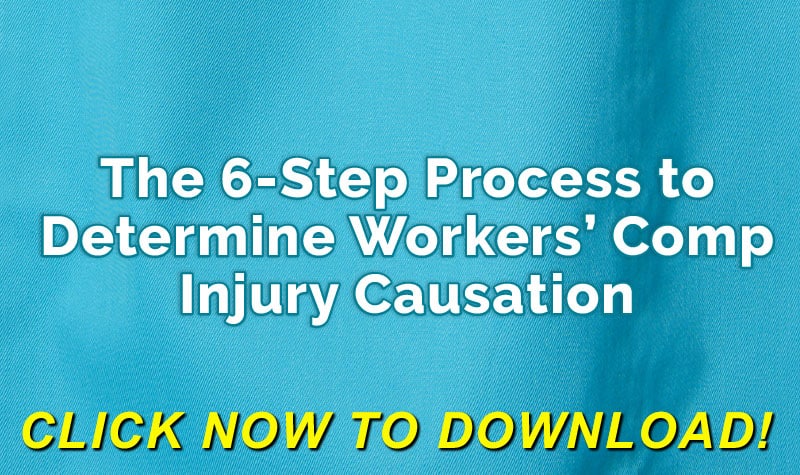In a recent claims audit of workers’ compensation claims for a Texas municipal pool, the claims auditor was astonished by the number of lifetime medical claims. The indemnity benefits had been paid out, sometimes years ago, but the former employees were still treating on a regular basis. In most of the claims the reason the employee had been seeing the medical provider for years was due to chronic pain.
Chronic pain refers to the medical condition where the injured party continues to suffer pain from the injury six or more months after the injury occurred and the pain is not relieved by medical or surgical care. For the treating physician, a patient’s chronic pain and the management of it can be a difficult process. Chronic pain can be hard to detect which makes it a difficult diagnosis for the physician.
Click Link to Access Free PDF Download
“The 6-Step Process To Determine Workers’ Comp Injury Causation”
The condition of chronic pain can continue for years or even the lifetime of the employee. In some cases the injured employee can return to work with the pain and ‘live with it.’ However, often the pain can be severe enough to be debilitating, preventing the injured employee from returning to work.
Chronic pain is often associated with Reflex Sympathetic Disorder (RSD) but can be present without RSD. When an employee develops RSD pain is often describe as a severe burning pain. While pain is very difficult to measure, there are physical symptoms of RSD the physician can see and measure including skin temperature changes (warmer or cooler than other parts of the body), skin color changes, stiffness and swelling in affected limbs, and decreased ability to move an affected extremity.
It is the work comp claims where the employee develops chronic pain without a RSD diagnosis that create a difficult situation for the work comp adjuster. Chronic pain can develop from various types of injuries including herniated and/or ruptured disc, amputation of a body part, joint injuries like carpal tunnel syndrome, torn ligaments and torn cartilage injuries and even traumatic brain injuries.
As chronic pain cannot be seen and is very difficult to measure, it is sometimes used as an excuse to stay off work by unscrupulous employees. The employee, who had a valid injury, becomes adjusted to receiving compensation without working and finds the claim of chronic pain to be the path to long-term benefits. The adjuster becomes suspicious of the employee’s delayed recovery due to chronic pain, sends out surveillance and finds the employee playing golf or performing strenuous work (away from the job). It is these fraudulent claims that give chronic pain a negative connotation.
Of course there are many totally legitimate injury claims with chronic pain. The challenge for the adjuster then becomes separating the valid chronic pain claims from the bogus claims, and then providing chronic pain management for those employees who truly need it.
Usually the first step the work comp adjuster takes to verify the employee’s chronic pain is to have an independent medical examination (IME). In some situations the IME doctor can verify the existence of chronic pain, but often the IME doctor cannot state with certainty whether or not the employee has a chronic pain condition.
After the IME, the next step for the adjuster is often to have a nurse case manager (NCM) assigned to the chronic pain claim, if a NCM has not already been working with the employee. Chronic pain management can become very expensive and take a considerable amount of medical knowledge to properly control. The NCM can discuss with the treating physician and the employee the best course of chronic pain management. The NCM should remain involved in the chronic pain claim until the employee is able to return to work or it is determined the employee will never return to work.
In most claims the treating physician initiates the use of pain medications, usually opioids (narcotics), to control the chronic pain. There are several problems with using opioids to control pain. The first one faced by the treating physician is to established the proper dosage for the employee. If the dosage is too low, the employee continues to suffer the pain. If the dosage is too high, the employee can become addicted to the pain medication.
Addiction is a problem with opioids for chronic pain management. The employee who started taking the opioids for the chronic pain likes ‘feeling no pain’ and become addicted to the opioids. With the addiction the employee becomes accustomed to having the narcotics in his body, and to continue to achieve the same effect, the dosage has to be increased. This leads to dependency on the drugs. It also creates withdrawal symptoms when the opioids are reduced or stopped.
The NCM must work with the physician to go beyond the use of narcotics to control the chronic pain. Instead of the narcotics the physician may consider electrotherapy with a transcutaneous electrical nerve stimulation (TENS) unit. Similar in effect to the TENS unit are pain pacemakers that can be implanted in the body to deliver low-level electrical stimulation to the spinal cord.
Another method to control chronic pain is the use of trigger point injections. A local anesthetic sometime with a steroid is injected into the painful area to relieve the pain. In some cases in only takes a few injections to resolve the chronic pain. Trigger point injections are often combined with physical therapy to recondition the muscles while the pain is being alleviated.
In the last few years some doctors have turned to anticonvulsants to control chronic pain. How anticonvulsants reduce pain is unclear but appears to be effective in some types of chronic pain control. Another recent approach being used to control pain is low dosage antidepressants which influence the level of certain chemicals in the brain.
Also, as there appears to be a mind-body connection when it comes to chronic pain, alternative treatments like psychotherapy and relaxation techniques are being tried with some success.
A pain management specialist/clinic can be utilized to assist the employee. The NCM can coordinate the treating physician, the pain management specialist, and any other medical providers including orthopedists, anesthesiologists, psychologists, and physiatrists. The NCM will review the medical and psychological aspects of the employee’s case with the pain management specialist to determine the best course of action.
Fortunately chronic pain workers’ compensation claims are infrequent, but when they do occur, they tend to be very expensive and can last for years. Learning how chronic pain claims should be managed will save the insurer or self-insurer significantly on these large dollar claims. The experienced work comp adjuster working with a dedicated NCM can control these claims for the benefit of both the employer and the employee.
Author Rebecca Shafer, J.D., Consultant, has worked successfully for 20 years with many industries to reduce Workers’ Compensation costs, including airlines, healthcare, manufacturing, printing/publishing, pharmaceuticals, retail, hospitality and manufacturing. She can be contacted at: RShafer@ ReduceYourWorkersComp.com or 860-553-6604.
WC Calculator:http://www.reduceyourworkerscomp.com/calculator.php
Do not use this information without independent verification. All state laws vary. You should consult with your insurance broker or agent about workers’ comp issues.
2009 Amaxx Risk Solutions, Inc. All rights reserved under International Copyright Law.














